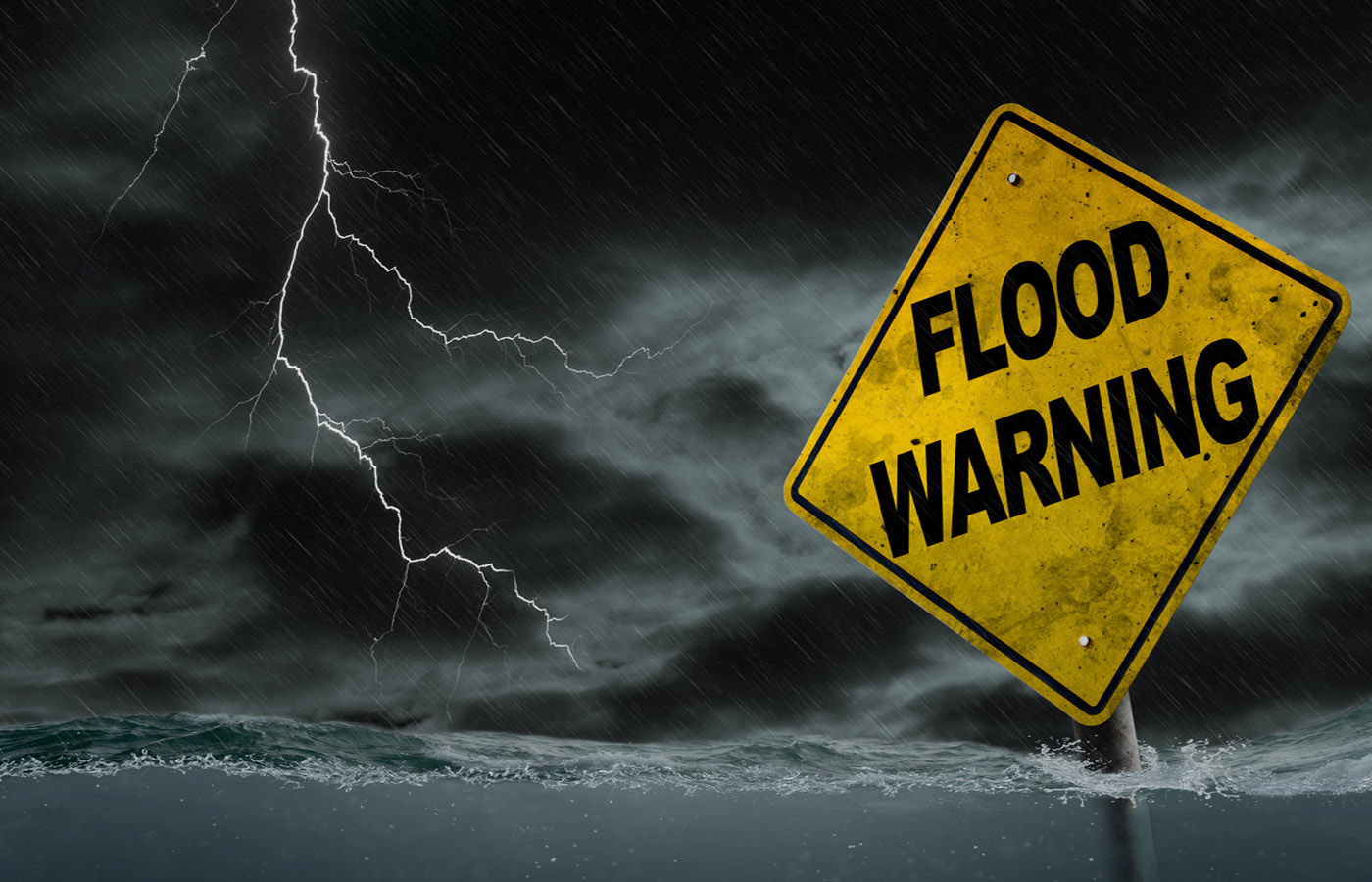Understanding Flash Flood Warnings: A Guide To Safety And Preparedness

Table of Contents
Recognizing the Signs of an Impending Flash Flood
A flash flood is characterized by a rapid and sudden rise in water levels, often with little to no warning. Unlike slower-developing river floods, flash floods can overwhelm an area in a matter of hours, or even minutes. Recognizing the warning signs is crucial for timely evacuation and safety.
Visual Indicators:
- Rapidly rising water levels: Observe streams, rivers, creeks, and even normally dry areas. A significant and sudden increase in water level is a major red flag.
- Increased water flow: A dramatic change in the speed and volume of water flow is a clear indication of an impending flash flood.
- Muddy water: The appearance of muddy or debris-laden water indicates increased runoff from upstream areas.
- Debris flowing in the water: Logs, branches, and other debris carried by swiftly moving water are strong indicators of a flash flood.
Auditory Indicators:
- Roaring sound of approaching water: The sound of rushing water, especially if intensifying, can be a crucial warning sign.
- Unusual rushing sounds: Pay attention to any unusual gurgling or rushing sounds from normally quiet water sources.
Remember, consistently monitoring weather forecasts and alerts is paramount to recognizing the potential for a flash flood before it strikes.
Understanding Flash Flood Warnings and Alerts
Knowing the difference between a Flash Flood Watch, Warning, and Advisory is critical for effective response. These alerts, issued by the National Weather Service (NWS), use a standardized system to communicate the level of threat:
- Watch: Conditions are favorable for flash flooding to develop. Stay informed and monitor weather conditions closely. Be prepared to take action if a warning is issued.
- Warning: A flash flood is occurring or is imminent. Take immediate action to protect yourself and your property. Evacuate if instructed.
- Advisory: Flash flooding is possible. Be aware of the potential danger and monitor conditions.
Dissemination Methods:
The NWS utilizes several methods to distribute flash flood warnings and alerts:
- NOAA Weather Radio: A dedicated weather radio is a reliable source of real-time alerts.
- Weather Apps: Popular weather apps like AccuWeather, The Weather Channel, and WeatherBug provide timely alerts and forecasts.
- Local News Channels: Local television and radio stations will often broadcast emergency alerts and updates.
- Wireless Emergency Alerts (WEA): Your mobile phone will receive alerts through the WEA system if you are in a flash flood warning area.
Using multiple alert sources ensures you receive timely and reliable information.
Creating a Flash Flood Preparedness Plan
Proactive planning significantly increases your chances of surviving a flash flood. A well-defined plan is essential for your family's safety.
-
Family Communication Plan: Establish a contact person outside the affected area and ensure everyone knows how to reach them.
-
Evacuation Routes: Identify multiple escape routes from your home and community, keeping in mind potential road closures.
-
Emergency Kit: Prepare a readily accessible kit containing:
- Water (at least one gallon per person per day)
- Non-perishable food supplies
- First-aid kit and necessary medications
- Flashlight, extra batteries, and a battery-powered radio
- Important documents (insurance, identification) in waterproof bags
- Emergency blankets
-
Flood Insurance: Consider purchasing flood insurance, even if you don't live in a designated high-risk area. Flash floods can strike anywhere.
-
High-Risk Areas: Familiarize yourself with potential high-risk areas in your community, such as floodplains and low-lying areas.
Actions to Take During a Flash Flood Warning
When a flash flood warning is issued, immediate action is paramount:
- Move to Higher Ground: Immediately evacuate to higher ground. Do not wait for the floodwaters to approach.
- Turn Around, Don't Drown: Never attempt to drive through flooded areas. Even a seemingly shallow stream can be deceptively dangerous.
- Avoid Flowing Water: Never walk or drive through flowing water; the current can be unexpectedly strong.
- Stay Away from Water Sources: Stay away from rivers, streams, and other bodies of water during and after a flash flood.
- Vehicle Trapped? Get Out: If your vehicle becomes trapped in floodwater, get out immediately and seek higher ground.
- Building Trapped? Go Up: If trapped in a building, move to the upper floors.
Post-Flash Flood Safety and Recovery
Even after the floodwaters recede, hazards remain:
- Avoid Floodwaters: Avoid floodwaters for several days after they recede; they may contain contaminants and debris.
- Report Damage: Report any damage to your property or infrastructure to local authorities.
- Structural Inspection: Check your home for structural damage before re-entering.
- Water Contamination: Be aware of potential health risks associated with contaminated floodwater.
- Document Damages: Thoroughly document any damages for insurance claims.
Conclusion
Understanding flash flood warnings, developing a preparedness plan, and knowing how to react during and after a flash flood are crucial for safety and minimizing potential loss. Flash floods pose a serious threat; by being prepared, you significantly reduce the risk to yourself and your loved ones. Create a flash flood preparedness plan today, stay informed about flash flood warnings in your area using multiple alert sources, and remember the vital message: "Turn Around, Don't Drown." For further information and resources, visit the National Weather Service (weather.gov) and FEMA (fema.gov) websites to enhance your flash flood safety and preparedness. Learn more about flash flood safety, flash flood preparedness, and understanding flash flood alerts to protect your family and community.

Featured Posts
-
 Solving The Disappearance Practical Steps And Strategies
May 26, 2025
Solving The Disappearance Practical Steps And Strategies
May 26, 2025 -
 Forget Footballers F1 Drivers Are This Seasons Style Icons
May 26, 2025
Forget Footballers F1 Drivers Are This Seasons Style Icons
May 26, 2025 -
 Predicting The 2025 Monaco Grand Prix Analysis And Betting Tips
May 26, 2025
Predicting The 2025 Monaco Grand Prix Analysis And Betting Tips
May 26, 2025 -
 Hostage Release Berger And Weiss Join March Of The Living
May 26, 2025
Hostage Release Berger And Weiss Join March Of The Living
May 26, 2025 -
 Eldorados Downfall A Look At The Bbc Soaps Failed Launch
May 26, 2025
Eldorados Downfall A Look At The Bbc Soaps Failed Launch
May 26, 2025
